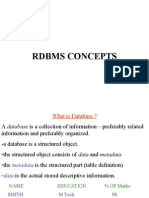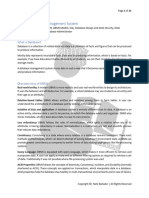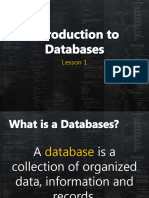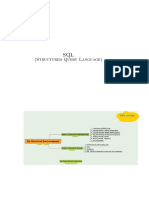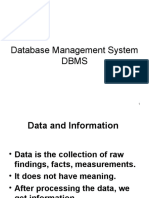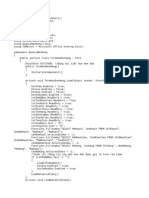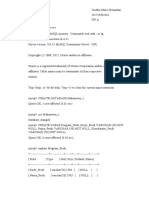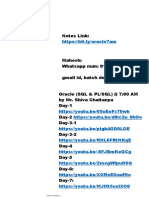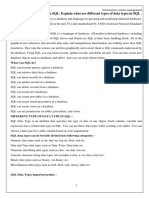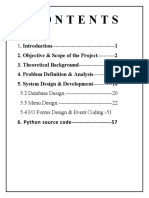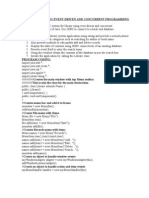0% found this document useful (0 votes)
86 views10 pagesAs-5 Data & Databases
Data is raw and unorganized facts, while information is processed data that is meaningful and useful. Structured data is organized into fields within records or tables, while unstructured data has no predefined structure. Relational databases organize data into tables with rows and columns, and relate tables through primary and foreign keys. SQL is used to define the database structure, manipulate the data, and query the data through operations like select, insert, update, and delete.
Uploaded by
Kavishka TrimanneCopyright
© © All Rights Reserved
We take content rights seriously. If you suspect this is your content, claim it here.
Available Formats
Download as PDF, TXT or read online on Scribd
0% found this document useful (0 votes)
86 views10 pagesAs-5 Data & Databases
Data is raw and unorganized facts, while information is processed data that is meaningful and useful. Structured data is organized into fields within records or tables, while unstructured data has no predefined structure. Relational databases organize data into tables with rows and columns, and relate tables through primary and foreign keys. SQL is used to define the database structure, manipulate the data, and query the data through operations like select, insert, update, and delete.
Uploaded by
Kavishka TrimanneCopyright
© © All Rights Reserved
We take content rights seriously. If you suspect this is your content, claim it here.
Available Formats
Download as PDF, TXT or read online on Scribd
/ 10

